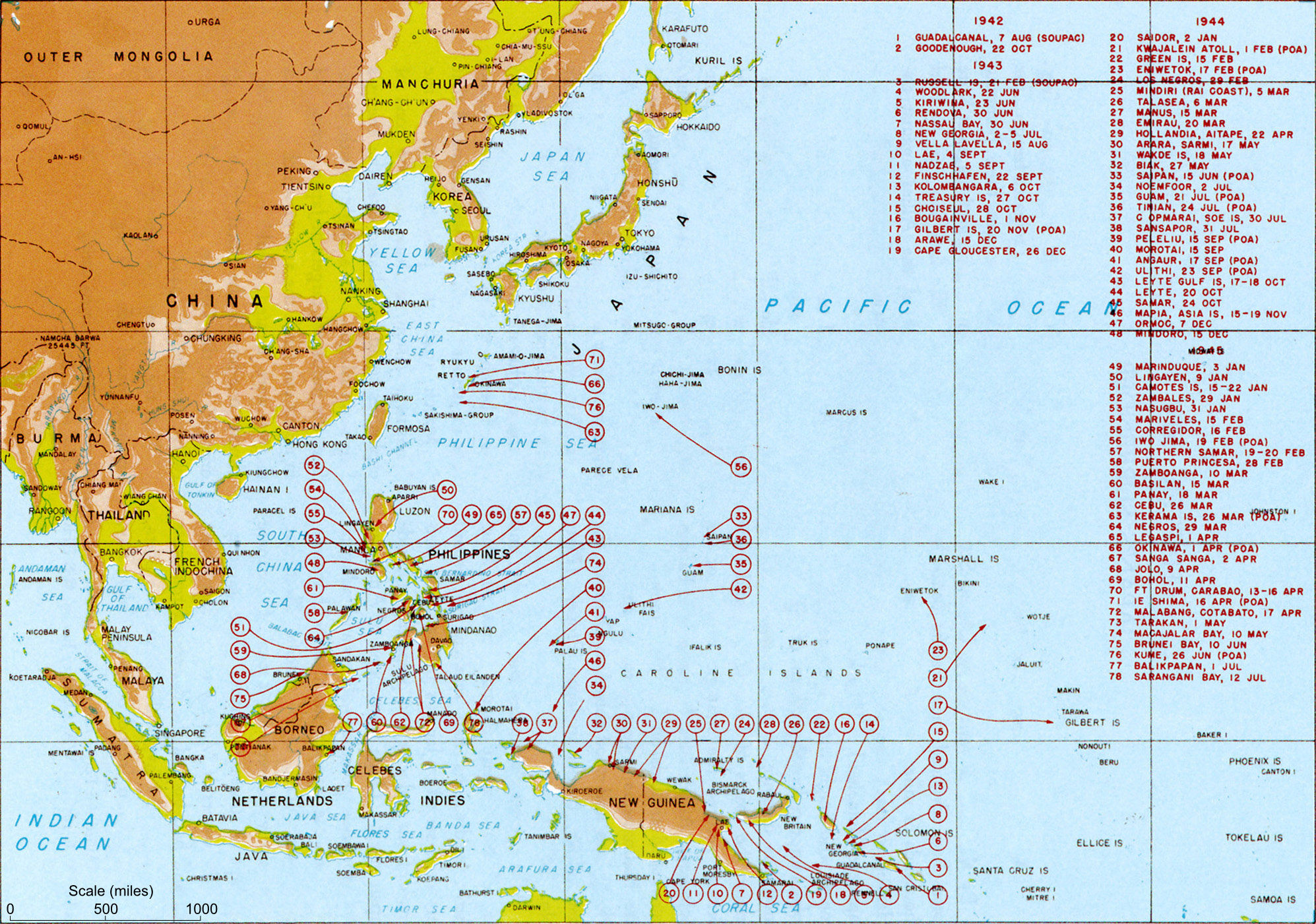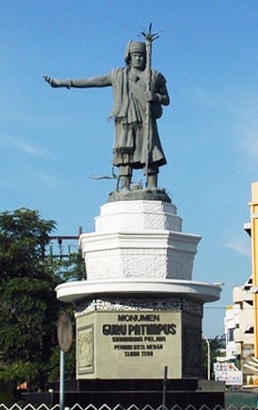|
Abdoe'lxarim M. S.
Abdoe'lxarim M. S. ( 1901–60), who was born Abdoel Karim bin Moehamad Soetan, was a journalist and Communist Party of Indonesia leader. He was interned in Boven-Digoel concentration camp from 1927 to 1932. During World War II, he collaborated with the Japanese and became an important figure in recruiting support for them in Sumatra; after their defeat he then became a key figure in the anti-Dutch republican forces during the Indonesian National Revolution. Biography Early life and political activity Abdoel Karim bin Moehamad Soetan was born in Idi Rayeuk, East Aceh Regency, Dutch East Indies (now Indonesia) on 18 June 1901 (or possibly 1900). He was childhood friends with Nathar Zainuddin, another future Communist Party leader. He studied for three years in a Dutch-language school (). He then worked as a Drafter in the Public Works department of Lhokseumawe and became active in trade union politics. During this time, for some reason, he began spelling his name with an X and abbrev ... [...More Info...] [...Related Items...] OR: [Wikipedia] [Google] [Baidu] |
Langsa
en, Realization of a Safe Community, Peace, Dignity, Progress, Prosperity with islamic values , image_map = Lokasi Aceh Kota Langsa.svg , map_alt = , map_caption = Location within Aceh , pushpin_map = Indonesia_Aceh#Indonesia_Sumatra North#Indonesia_Sumatra#Indonesia , pushpin_label = Langsa , pushpin_map_caption = Location in Aceh, Northern Sumatra, Sumatra and Indonesia , pushpin_label_position = bottom , coordinates = , coor_pinpoint = , coordinates_footnotes = , subdivision_type = Country , subdivision_name = Indonesia , subdivision_type1 = Region , subdivision_name1 = Sumatra , subdivision_type2 = Province , subdivision_name2 = Aceh , subdivision_type3 = , subdivision_name3 = , established_title = City Established , established_date = 17 October 2001 , established_title1 = , established_da ... [...More Info...] [...Related Items...] OR: [Wikipedia] [Google] [Baidu] |
Proclamation Of Indonesian Independence
The Proclamation of Indonesian Independence ( id, Proklamasi Kemerdekaan Indonesia, or simply ''Proklamasi'') was read at 10:00 on Friday, 17 August 1945 in Jakarta. The declaration marked the start of the diplomatic and armed resistance of the Indonesian National Revolution, fighting against the forces of the Netherlands and pro-Dutch civilians, until the latter officially acknowledged Indonesia's independence in 1949. The document was signed by Sukarno (who signed his name "Soekarno" using the Van Ophuijsen orthography) and Mohammad Hatta, who were appointed president and vice-president respectively the following day. The date of the Proclamation of Indonesian Independence was made a public holiday by a government decree issued on 18 June 1946. Background The beginnings of the independence movement In 1918, the Dutch authorities in the Dutch East Indies established a partly-elected People's Council, the '' Volksraad'', which for the first time gave Indonesian nationalists ... [...More Info...] [...Related Items...] OR: [Wikipedia] [Google] [Baidu] |
Japanese Surrender
The surrender of the Empire of Japan in World War II was announced by Emperor Hirohito on 15 August and formally signed on 2 September 1945, bringing the war's hostilities to a close. By the end of July 1945, the Imperial Japanese Navy (IJN) had become incapable of conducting major operations and an Allied invasion of Japan was imminent. Together with the United Kingdom and China, the United States called for the unconditional surrender of the Japanese armed forces in the Potsdam Declaration on 26 July 1945—the alternative being "prompt and utter destruction". While publicly stating their intent to fight on to the bitter end, Japan's leaders (the Supreme Council for the Direction of the War, also known as the "Big Six") were privately making entreaties to the publicly neutral Soviet Union to mediate peace on terms more favorable to the Japanese. While maintaining a sufficient level of diplomatic engagement with the Japanese to give them the impression they might be w ... [...More Info...] [...Related Items...] OR: [Wikipedia] [Google] [Baidu] |
Kenpeitai
The , also known as Kempeitai, was the military police arm of the Imperial Japanese Army from 1881 to 1945 that also served as a secret police force. In addition, in Japanese-occupied territories, the Kenpeitai arrested or killed those suspected of being anti-Japanese. While institutionally part of the army, the Kenpeitai also discharged military police functions for the Imperial Japanese Navy under the direction of the Admiralty Minister (although the IJN had its own much smaller Tokkeitai), those of the executive police under the direction of the Home Minister and those of the judicial police under the direction of the Justice Minister. A member of the Kenpeitai corps was called a ''kenpei'' (憲兵). History The Kenpeitai was established in 1881 by a decree called the , figuratively "articles concerning gendarmes". Its model was the National Gendarmerie of France. Details of the Kenpeitai's military, executive, and judicial police functions were defined by the '' ... [...More Info...] [...Related Items...] OR: [Wikipedia] [Google] [Baidu] |
Heiho
were native Indonesian units raised by the Imperial Japanese Army during its occupation of the Dutch East Indies in World War II. Alongside the ''Heiho'', the Japanese organized ''Giyūgun'' (義勇軍, "Volunteer army"), such as the Java-based " Defenders of the Homeland" (PETA; id, Pembela Tanah Air, ja, 郷土防衛義勇軍, Kyōdo Bōei Giyūgun). Indonesian youths who joined the ''Heiho'' were never given high ranks or positions, contrasted by the young people who were members of PETA or other ''Giyūgun'' and often received appointments and promotions. This discrimination carried over into public life, where ''Heiho'' members had to salute any Japanese citizen, both civilians and military. In addition, there was also a difference in salary, accommodation, and food with the ''heitai'' (兵隊, "soldiers") of the ''Giyūgun'', which were adjusted according to the social status of the individual ''Heiho'' soldier. The monthly salary of a ''Heiho'' was only 30 rupiah f ... [...More Info...] [...Related Items...] OR: [Wikipedia] [Google] [Baidu] |
Japanese Occupation Of The Dutch East Indies
The Empire of Japan occupied the Dutch East Indies (now Indonesia) during World War II from March 1942 until after the end of the war in September 1945. It was one of the most crucial and important periods in modern Indonesian history. In May 1940, Germany occupied the Netherlands, and martial law was declared in the Dutch East Indies. Following the failure of negotiations between the Dutch authorities and the Japanese, Japanese assets in the archipelago were frozen. The Dutch declared war on Japan following the 7 December 1941 Attack on Pearl Harbor. The Japanese invasion of the Dutch East Indies began on 10 January 1942, and the Imperial Japanese Army overran the entire colony in less than three months. The Dutch surrendered on 8 March. Initially, most Indonesians welcomed the Japanese as liberators from their Dutch colonial masters. The sentiment changed, however, as between 4 and 10 million Indonesians were recruited as forced labourers ('' romusha'') on economic de ... [...More Info...] [...Related Items...] OR: [Wikipedia] [Google] [Baidu] |
World War II
World War II or the Second World War, often abbreviated as WWII or WW2, was a world war that lasted from 1939 to 1945. It involved the World War II by country, vast majority of the world's countries—including all of the great powers—forming two opposing military alliances: the Allies of World War II, Allies and the Axis powers. World War II was a total war that directly involved more than 100 million Military personnel, personnel from more than 30 countries. The major participants in the war threw their entire economic, industrial, and scientific capabilities behind the war effort, blurring the distinction between civilian and military resources. Air warfare of World War II, Aircraft played a major role in the conflict, enabling the strategic bombing of population centres and deploying the Atomic bombings of Hiroshima and Nagasaki, only two nuclear weapons ever used in war. World War II was by far the List of wars by death toll, deadliest conflict in hu ... [...More Info...] [...Related Items...] OR: [Wikipedia] [Google] [Baidu] |
Surabaya
Surabaya ( jv, ꦱꦸꦫꦧꦪ or jv, ꦯꦹꦫꦨꦪ; ; ) is the capital city of the Indonesian province of East Java and the second-largest city in Indonesia, after Jakarta. Located on the northeastern border of Java island, on the Madura Strait, it is one of the earliest port cities in Southeast Asia. According to the National Development Planning Agency, Surabaya is one of the four main central cities of Indonesia, alongside Jakarta, Medan, and Makassar. The city has a population of 2.87 million within its city limits at the 2020 census and 9.5 million in the extended Surabaya metropolitan area, making it the second-largest metropolitan area in Indonesia. The city was settled in the 10th century by the Kingdom of Janggala, one of the two Javanese kingdoms that was formed in 1045 when Airlangga abdicated his throne in favor of his two sons. In the late 15th and 16th centuries, Surabaya grew to be a duchy, a major political and military power as well ... [...More Info...] [...Related Items...] OR: [Wikipedia] [Google] [Baidu] |
Medan
Medan (; English: ) is the capital and largest city of the Indonesian province of North Sumatra, as well as a regional hub and financial centre of Sumatra. According to the National Development Planning Agency, Medan is one of the four main central cities of Indonesia, alongside Jakarta, Surabaya, and Makassar. As of the 2020 Census, Medan has a population of 2,435,252 within its city limits,Badan Pusat Statistik, Jakarta, 2021. and over 3.4 million in its built-up urban area, making it the fourth largest urban area in Indonesia. The Medan metropolitan area—which includes neighbouring Binjai, Deli Serdang Regency, and a part of Karo Regency—is the largest metropolitan area outside of Java, with 4,744,323 residents counted in the 2020 Census. Medan is a multicultural metropolis and a busy trading city bordered by the Strait of Malacca, making it one of the major economic cities in Indonesia. A gateway to the western part of Indonesia, Medan is supported by the Po ... [...More Info...] [...Related Items...] OR: [Wikipedia] [Google] [Baidu] |
Boven Digoel Regency
Boven Digoel Regency is a regency (''kabupaten'') in the northern part of the Indonesian province of South Papua. It is split off from Merauke Regency (of which it used to be a part) on 12 November 2002. The regency covers an area of , and the total population was 55,784 at the 2010 Census and 64,285 at the 2020 Census. The administrative centre is the town of Tanahmerah. Administrative districts The regency comprises twenty districts (''distrik''), tabulated below with their areas and their populations at the 2010 Census and the 2020 Census.Badan Pusat Statistik, Jakarta, 2021. The table also includes the location of the district administrative centres and the number of administrative villages (rural ''desa'' and urban ''kelurahan'') in each district. History In the Dutch East Indies era, the present Boven Digoel Regency was known as ''Digul Atas'' (Upper Digul), located on the banks of the Digul River. Boven-Digoel was a Dutch prison camp in the Dutch East Indies at the h ... [...More Info...] [...Related Items...] OR: [Wikipedia] [Google] [Baidu] |
Yogyakarta
Yogyakarta (; jv, ꦔꦪꦺꦴꦒꦾꦏꦂꦠ ; pey, Jogjakarta) is the capital city of Special Region of Yogyakarta in Indonesia, in the south-central part of the island of Java. As the only Indonesian royal city still ruled by a monarchy, Yogyakarta is regarded as an important centre for classical Javanese fine arts and culture such as ballet, ''batik'' textiles, drama, literature, music, poetry, silversmithing, visual arts, and '' wayang'' puppetry. Renowned as a centre of Indonesian education, Yogyakarta is home to a large student population and dozens of schools and universities, including Gadjah Mada University, the country's largest institute of higher education and one of its most prestigious. Yogyakarta is the capital of the Yogyakarta Sultanate and served as the Indonesian capital from 1946 to 1948 during the Indonesian National Revolution, with Gedung Agung as the president's office. One of the districts in southeastern Yogyakarta, Kotagede, was the capital o ... [...More Info...] [...Related Items...] OR: [Wikipedia] [Google] [Baidu] |






